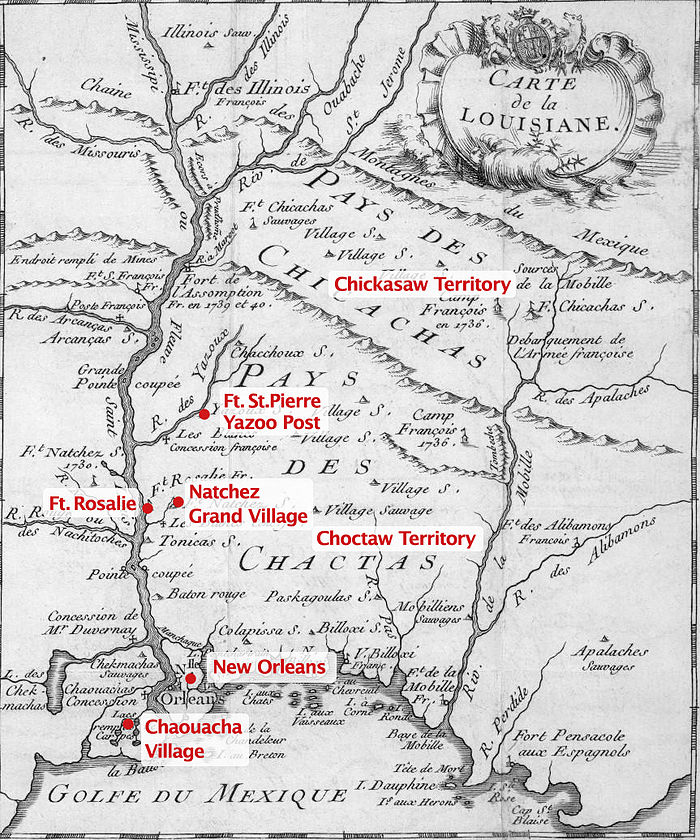Natchez: Etiologies of Anthropocenic Emergence
The projects of the Natchez Field Station explore the etiologies of the Anthropocene in Natchez, Mississippi, looking closely at the core ideologies and practices—the rationality at the heart of the conceptual systems, which drove the emergence of the Anthropocene. Our exploration highlights the shared conceptual DNA; looking into the entangled historical unfoldings, and the intertwined implications of the deep connections that exist between white supremacism and human exceptionalism, and between genocide and ecocide.
The Natchez Field Station explores the etiologies of Anthropocenic emergence in the tiny, historic city of Natchez, Mississippi (population ~15,000). Located in Adams County, on the banks of the Mississippi River, Natchez is one of the oldest cities in the region, and was a major hub across the South from its “founding” by French colonizers in 1716 (then named Fort Rosalie; renamed Natchez in 1730) until the postwar era. Natchez was the name the colonists gave to the Theloel nation of Native Americans who had lived in the region since the 7th century CE; later known as the Natchez Indians, the French had annihilated them by 1730.
We consider Natchez as a diachronic “critical case,” offering a synecdochic site of Anthropocenic emergence on multiple axes. Functioning as a sychecdoche—where the workings of the “parts” illuminate the workings of the “whole”—the processes that unfolded here over a 500-year period not only mirror but also illuminate the dynamics of the Anthropocene’s emergence, more generally, and in many crucial ways.
Natchez offers a palimpsestic site to explore the entangled causal mechanisms that made institutional, pragmatic “flesh” of an ideological, ideational “world” as the Anthropocene unfolded. From settler-colonial occupation and indigenous genocide to industrial-scale chattel slavery and a brutal domestic slave trade; from the rise of the ecologically disastrous agricultural-monocrop Plantationocene, powered by the coerced labor of enslaved persons, to the spread of so-called “invasive species” introduced to combat soil erosion; and from the riparian and alluvial vicissitudes of the Mississippi River, to the contemporary era’s turn towards fracking and hydrocarbon exploration in the State, concentrated in and around Adams County. In particular, Natchez shows the complex and consequential entanglement of the twin concepts of white supremacism and human exceptionalism and their intertwined instantiations in genocide and ecocide, giving form and motivational force to the emergent Anthropocene conditions along the Mississippi since the start of the colonial era.
Exploring new methods of research within the historical and contemporary Natchez context, members of our multidisciplinary team (Ellie Irons, Montana Torrey, and Maya Kóvskaya) are investigating the embodiment of macro-narratives within micro-processes. We are treating these as synecdochic cases that instantiate in site-specific artworks, workshops, interventions, and/or historical narratives that speak to larger Anthropocene processes more generally, whilst retelling the stories of the Natchez along the Mississippi.
- projectEllie Irons
Re-Patterning with Kudzu
The introduction of Kudzu into the American South has a storied history connecting rhetoric around migration and race with ecology.
Case Study, Storytelling, Species, Agriculture, Biodiversity, Settler Colonialism, Migration, Race
- projectMontana Torrey
Two Breezes
Punkahs brought climate control into the American South from early on, using enslaved peoples to laboriously fan plantation owners in the summer heat.
Case Study, Storytelling, Plantation, Slavery, Socio-ecological design, Air

